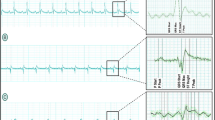Abstract
Adaptation to various forms of stress has been found to be associated with increased cellular tolerance to myocardial ischemia. In this study, the effects of myocardial adaptation to oxidative stress was examined by injecting rats with endotoxin (0.5 mg/kg) and its non-toxic derivative, lipid A (0.5 mg/kg). Both compounds exerted oxidative stress within 1 h of treatment as evidenced by enhanced malonaldehyde formation. The oxidative stress disappeared steadily and progressively with time in concert with the appearance of the induction of glutathione and antioxidative enzymes that included superoxide dismutase, catalase, glutathione peroxidase and glutathione reductase. After 24 h of endotoxin or lipid A treatment, the amount of oxidative stress and antioxidant enzyme levels were significantly lower and higher, respectively, compared to those at the baseline levels. Corroborating these results, both endotoxin and lipid A provided protection against myocardial ischemia and reperfusion injury as evidenced by significantly improved postischemic recovery of left ventricular functions. The data presented here demonstrates that a controlled amount of oxidative stress induces the expression of intracellular antioxidants that can result in enhanced myocardial tolerance to ischemia. This suggests that myocardial adaptation to oxidative stress may be a potential tool for reduction of ischemic/reperfusion injury.
Similar content being viewed by others
References
Das DK, Engelman RM, Kimura Y: Molecular adaptation of cellular defences following preconditioning of the heart by repeated ischemia. Cardiovasc Res 27: 578–584, 1993
Maulik N, Engelman RM, Wei Zu, Lu D, Rousou JA, Das DK: Interleukin-1α preconditioning reduces myocardial ischemia reperfusion injury. Circulation 88 (suppl II): 387–394, 1993
Das DK, Prasad MR, Lu D, Jones RM: Preconditioning of heart by repeated stunning. Adaptive modification of antioxidative defense system. Cell Mol Biol 38: 739–749, 1992
Flack J, Kimura Y, Engelman RM, Das DK: Preconditioning the heart by repeated stunning improves myocardial salvage. Circulation 84 (suppl III): 369–374, 1991
Das DK, Maulik N: Evaluation of antioxidant effectiveness in ischemia reperfusion tissue injury. Methods Enzymol 233: 601–610, 1994
Jenero DR, Burghardt B: Oxidative injury to myocardial membrane. Direct modulation by endogenous α-tocopherol. J Mol Cell Cardiol 21: 111–124, 1989
Das DK, Maulik N: Protection against free radical injury in the heart and cardiac performance. In: C.K. Sen, L. Packer, O. Hanninen (eds). Exercise and Oxygen Toxicity. Elsevier Science, Amsterdam, (in press), 1994
Das DK, Engelman RM: Mechanism of free radical generation in ischemic and reperfused myocardium. In: D.K. Das, W.B. Essman (eds). Oxygen Radicals: Systemic Events and Disease Processes. Krager, Basel, pp 97–128, 1990
Qureshi TN, Takayama K, Ribi E: Purification and structural determination of nontoxic lipid A obtained from lipopolysaccharide of Salmonella typhimurium. J Biol Chem 257: 11808–11815, 1982
Takayama K, Qureshi N, Raetz CRH: Influence of fine structure of lipid A on Limulus amebocyte clotting and toxic activities. Infect Immunol 45: 350–355, 1984
Repine JE: Oxidant-antioxidant balance: some observations from studies of ischemia-reperfusion in isolated perfused rat hearts. Am J Med 91: 45S-53S, 1991
Brown JM, Grosso MA, Terada LS, Whitman GJR, Banerjee AB, White CW, Harken AH, Repine JM: Endotoxin pretreatment increases endogenous myocardial catalase activity and decreases ischemia/reperfusion injury in isolated rat hearts. Proc Natl Acad Sci, USA 86: 2516–2520, 1989
Nelson DW, Brown JM, Banerjee A, Bensard DD, Rogers KB, Locke-Winter CR, Anderson BO, Harken AH: Pretreatment with a nontoxic derivative of endotoxin induces functional protection against cardiac ischemia/reperfusion injury. Surgery 110: 365–369, 1991
Tosaki A, Cordis GA, Szerdahelyi P, Engelman RM, Das DK. Effects of preconditiong on reperfusion arrhythmias, myocardial functions, formation of free radicals, ion shifts in isolated ischemic/reperfused rat hearts. J Cardiovasc Pharmacol 23: 365–373, 1994
Cordis GA, Maulik N, Bagchi D, Engelman RM, Das DK: Estimation of the extent of lipid peroxidation in the ischemic and reperfused heart by monitoring lipid metabolic products with the aid of high-performance liquid chromatography. J Chromatogr 632: 97–103, 1993
Cordis GA, Bagchi D, Maulik N, Das DK: High-performance liquid chromatographic method for the simultaneous detection of malonaldehyde, acetaldehyde, formaldehyde, acetone and propionaldehyde to monitor the oxidative stress in heart. J Chromatogr 661: 181–191, 1994
Griffith OW: Determination of glutathione and glutathione disulfide using glutathione reductase and 2-vinylpyridine. Anal Biochem 106: 207–212, 1980
Das DK, Engelman RM, Rousou JA, Breyer RH, Otani H, Lemeshow S: Pathophysiology of superoxide radical as potential mediator of ischemic and reperfusion injury in pig heart. Basic Res Cardiol 81: 155–166, 1986
Liu X, Engelman RM, Moraru II, Rousou JA, Flack JE, Deaton DW, Maulik N, Das DK: Heat Shock: a new approach for myocardial preservation in cardiac surgery. Circulation 86 (suppl II): 358–363, 1992
Homma JY, Matsuura M, Kanegasaki S, Kawakubo Y, Kojima Y, Shibukawa N, Kumazawa Y, Yamamoto A, Tanamoto K, Yasuda T, Imoto M, Yoshimura H, Kusumoto S, Shiba T: Structure requirements of lipid A responsible for the functions: a study with chemically synthesized lipid A and its analogs. J Biochem 98: 395–000, 1985
Frank L, Yam J, Roberts RJ: The role of endotoxin in protection of adult rats from oxygen-induced lung toxicity. J Clin Invest 61: 269–275, 1978
Frank L, Summerville J, Massaro D: Protection from oxygen toxicity with endotoxin. Role of the antioxidant enzymes of the lung. J Clin Invest 65: 1104–1110, 1980
Author information
Authors and Affiliations
About this article
Cite this article
Maulik, N., Watanabe, M., Engelman, D.T. et al. Oxidative stress adaptation improves postischemic ventricular recovery. Mol Cell Biochem 144, 67–74 (1995). https://doi.org/10.1007/BF00926742
Received:
Accepted:
Issue Date:
DOI: https://doi.org/10.1007/BF00926742



